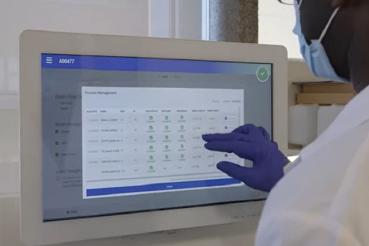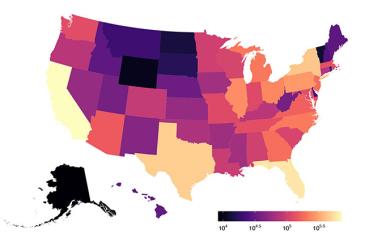Physical activity helps us look better, feel better and stay healthier. A new study shows that physically active people also tend to have healthier-looking brain tissue on magnetic resonance imaging — which may account for their better-than-average cognitive performance — according to researchers at Rush University Medical Center.
“This is an ongoing observational study where we assessed physical activity among older adults and found that those who were more physically active had fewer white matter abnormalities, which appear as bright areas in the scan,” said Robert Dawe, PhD, an assistant professor in the Rush Alzheimer’s Disease Center and the Department of Diagnostic Radiology and Nuclear Medicine at Rush Medical College.
The study, published recently in PLOS ONE, used data from 318 participants in Rush’s ongoing Memory and Aging Project, which began in 1997 and includes people age 65 and older live in greater Chicago. Those who enrolled were mostly white without known dementia, and all participants agreed to undergo annual clinical evaluations while alive and brain autopsy after death.
The participants were asked to wear an actigraph, a watch-like activity monitor, for up to 10 consecutive days to quantify physical activity. Participants wore the actigraph each year, but only data from the last year of their participation in the study was used in analyses. Participants also underwent detailed cognitive and motor testing.
The participants died at an average age of 91. Of 595 Memory and Aging Project participants who had valid measures of cognitive function and motor abilities from the same follow-up cycle as their actigraph recording, brain specimens were obtained for 508, and 318 of those specimens were imaged using MRI to detect regions of tissue abnormalities and degeneration associated with physical activity.
After postmortem brain MRI, the brain tissue was examined under microscope for degeneration of the brain and other abnormalities. Using the last available measure of total daily physical activity, the researchers were able to compare cognitive and motor scores from the same year as the last actigraph recording prior to death.
“In comparing the brain scans, we found that the participants who were less active had white matter that showed signs of degeneration,” Dawe said. “We think of white matter as the communication network among different parts of the brain. If the white matter becomes damaged, there will be impaired communication among brain regions, resulting in overall decreased brain function.
“When people ask what they can do to stay sharp, one part of the answer is to stay active, because it does seem to influence certain aspects of brain health that we can see on MRI, and those in turn appear to be helpful in maintaining good cognitive abilities well into your 80s and even 90s,” he added.
Dawe notes that because of the cross-sectional design of this study, further studies are needed to prove that there is indeed a causal connection between physical activity, brain health, and cognition.





